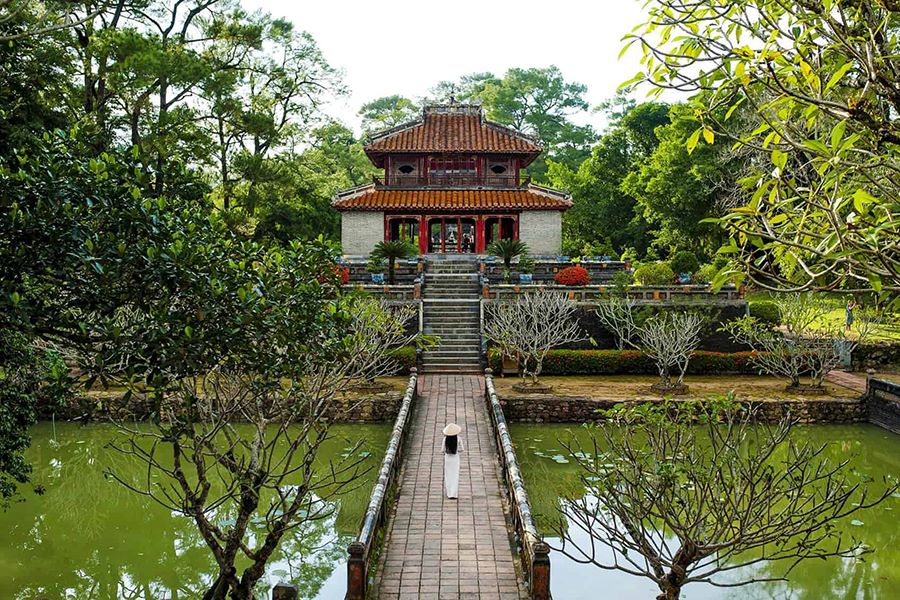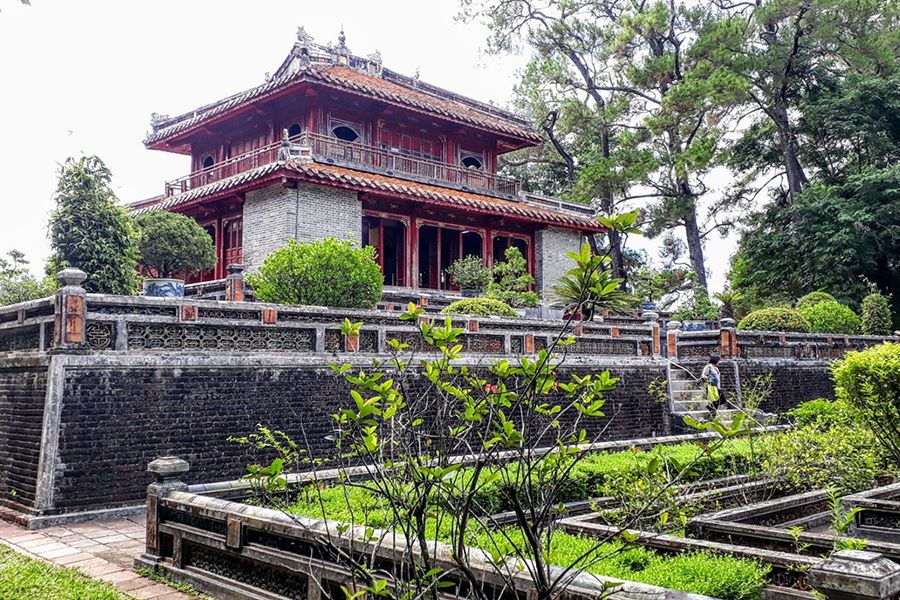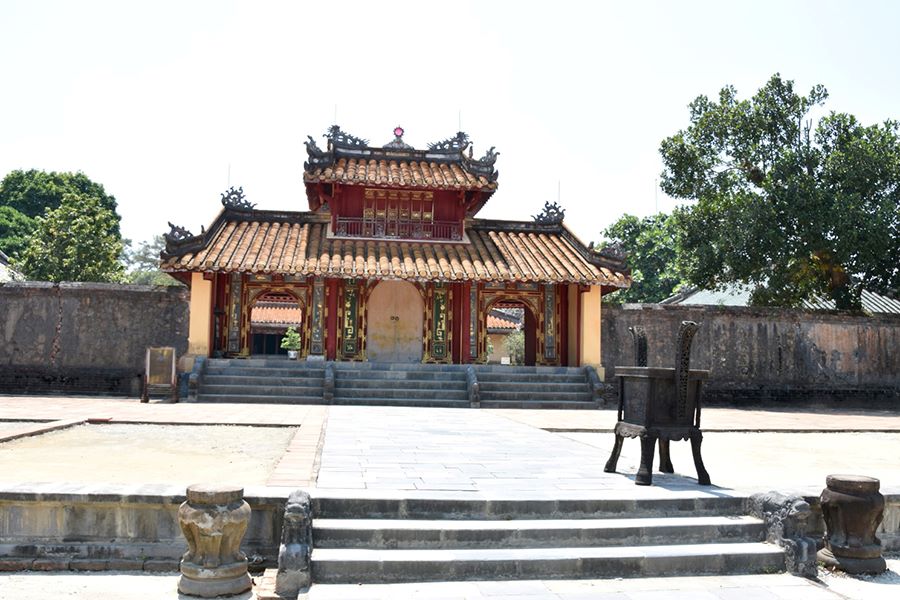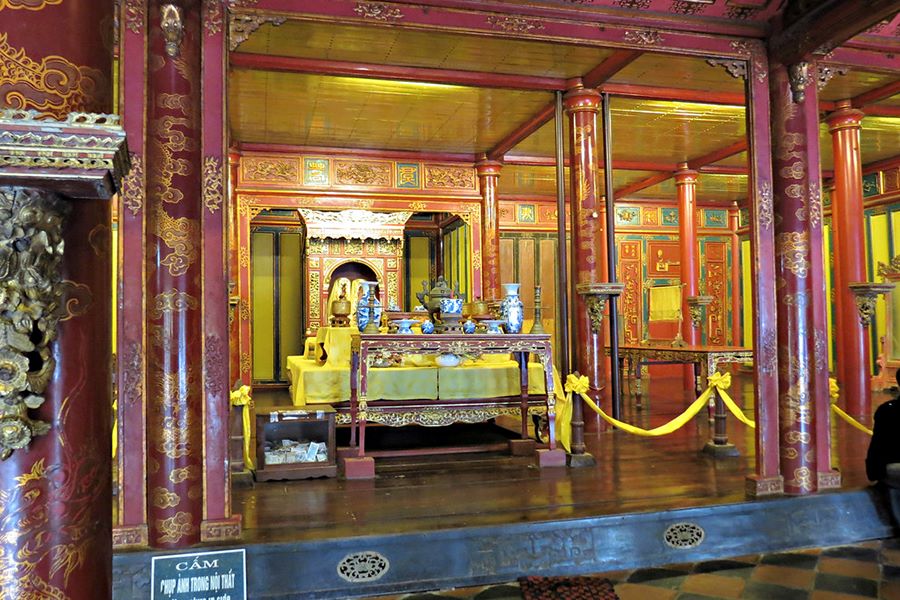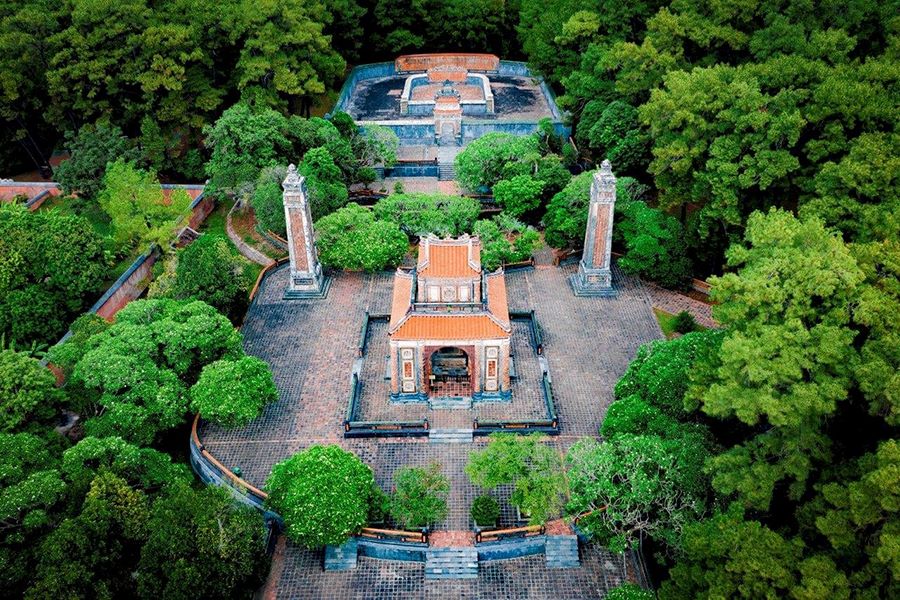When it comes to places to visit in Hue Vietnam, the Mausoleum of Emperor Minh Mang, bearing the nation’s rich history, is a captivating destination that visitors should not miss out on their tours with local Vietnam travel agency. It is not an exaggeration to say that the Mausoleum of Emperor Minh Mang is one of the most stunning ancient architectural works of the Nguyen Dynasty. With traditional beauty that bears the distinctive features of Confucianism, this mausoleum has attracted a large number of visitors from all over the world.
About the Mausoleum of Emperor Minh Mang in Hue
Location, opening hours
The Mausoleum of Emperor Minh Mang is in Huong Tho commune, Huong Tra district, Thua Thien Hue province. It is 14 kilometers away from Hue’s city center. The tomb welcomes visitors daily, from 7:30 am to 5:00 pm.
History
Every single mausoleum in Hue has its own long-standing history and this tomb of Minh Mang is no exception. Minh Mang was a king who made many significant reforms to the country at the time. In his reign, he wanted to build a grand mausoleum to serve as his future resting place. The king started the construction of the mausoleum in 1840. Unfortunately, he passed away before construction was complete.
Not until the time of his successor, King Thieu Tri, was the Mausoleum of Emperor Minh Mang finally built in 1843. It has been preserving the remains of King Minh Mang until today.
Architecture
The Mausoleum of Emperor Minh Mang has become one of the most impressive tourist attractions in Hue Vietnam thanks to its unique architecture. The mausoleum covers over 18 hectares, with more than 40 large and small constructions arranged symmetrically. Surrounded by trees, rivers, and mountains, it also stands out with a tranquil atmosphere, which will surely bring you peace of mind.
What are the top highlights of the Mausoleum of Emperor Minh Mang?
Dai Hong Mon Gate
The first thing that catches the eyes of visitors when they come to the mausoleum is Dai Hong Mon Gate. As the main entrance of the mausoleum, the gate was built of brick and lime at the time, creating a mossy color that has lasted until now.
It is said that Dai Hong Mon Gate was opened only once to bring King Minh Mang’s coffin into the mausoleum, and has remained sealed ever since. The purpose of the gate is to guard the endless sleep of the king. Thus, visitors will have to go through one of the two auxiliary gates, which are Ta Hong Mon (the red gate on the left) and Huu Hong Mon (the red gate on the right), to enter the mausoleum.
Bai Dinh Yard
Stepping through Dai Hong Mon Gate, visitors will see a spacious yard named Bai Dinh. It has an impressively large area of almost 2,000 square meters. The yard is tiled with beautiful Bat Trang ceramic bricks, the famous pottery village of Hanoi. On both sides of the yard, there are rows of statues of mandarins, elephants, and horses. These statues act as guardians that protect and attend to the king even after he has passed away.
Hieu Duc Mon Gate and Sung An Temple
The core of the Mausoleum of Emperor Minh Mang is a sanctuary that is divided into Hieu Duc Mon Gate and Sung An Temple. This area is a place of worship, where King Minh Mang and his queen Ta Thien Nhan are honored. Here, tourists will feel the holy atmosphere brought by sophisticated figures of Vietnamese dragons and phoenixes designed in red and gold.
Minh Lau Pavilion
Minh Lau Pavilion is another highlight of the mausoleum. It served as a retreat for the king on moonlit nights. The entire square-shaped building, with two floors and eight roofs situated at the top of Tam Dai Mountain, is an embodiment of Eastern philosophy. It overlooks a garden in the shape of the letter “Tho”, which means longevity in Sino-Vietnamese. This structure is a must-see place for those who are fond of the history of Confucianism and the philosophy of life.
Hien Duc Mon Gate
Hien Duc Mon Gate is a structure located in Tam Dien (Resting Hall). It was built on a square-shaped land, symbolizing the god of land, as the ancient people believed that a square was the shape of the earth while a circle was the shape of the sky. This place has a sacred and peaceful atmosphere, which is also ideal for you to take photos.
Tan Nguyet Lake
This is one of the most enchanting sites to visit during your trip to the Mausoleum of Emperor Minh Mang. The lake has the shape of the crescent moon embracing the sun shape, symbolizing transformation and progress in ancient belief.
Thong Minh Chinh Truc Bridge
This bridge crosses Tan Nguyet Lake. The long name of this bridge means wisdom and integrity, which are two must-have virtues of a mandarin at that time.
When and how should you visit Minh Mang Tomb in Hue?
The most beautiful and pleasant period in Hue is early spring, from January to February, with cool weather, less sunshine, and no rain. This is a convenient time for a sightseeing tour of Minh Mang Tomb Hue and other tourist attractions in this ancient citadel.
Surrounded by nature, the Mausoleum of Emperor Minh Mang is definitely a harmonious and peaceful place to visit. Here, tourists can gain a deeper understanding of Vietnam’s history and culture, especially the history of the Nguyen Dynasty and Confucianism.

